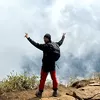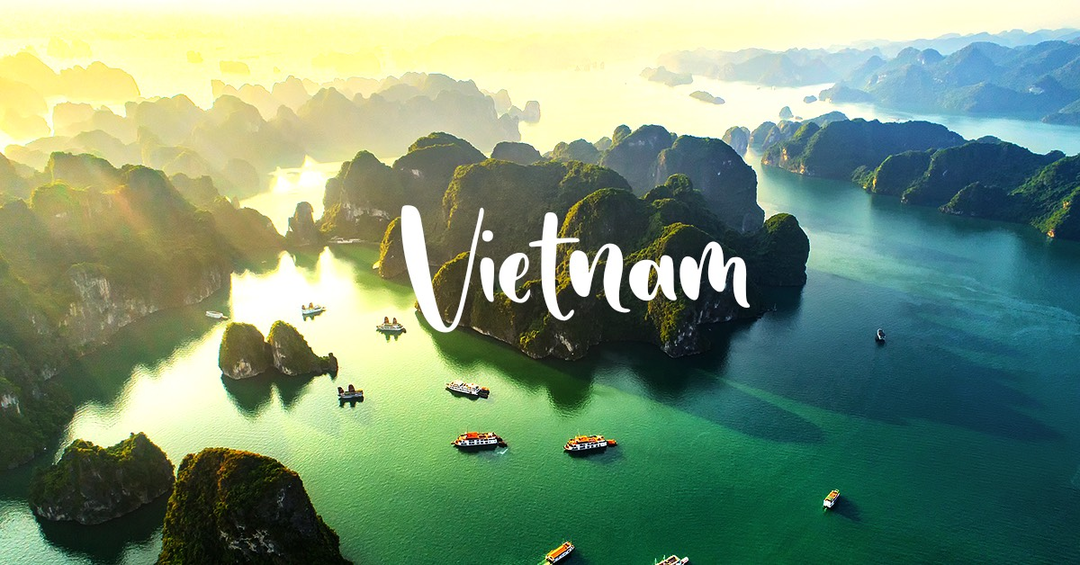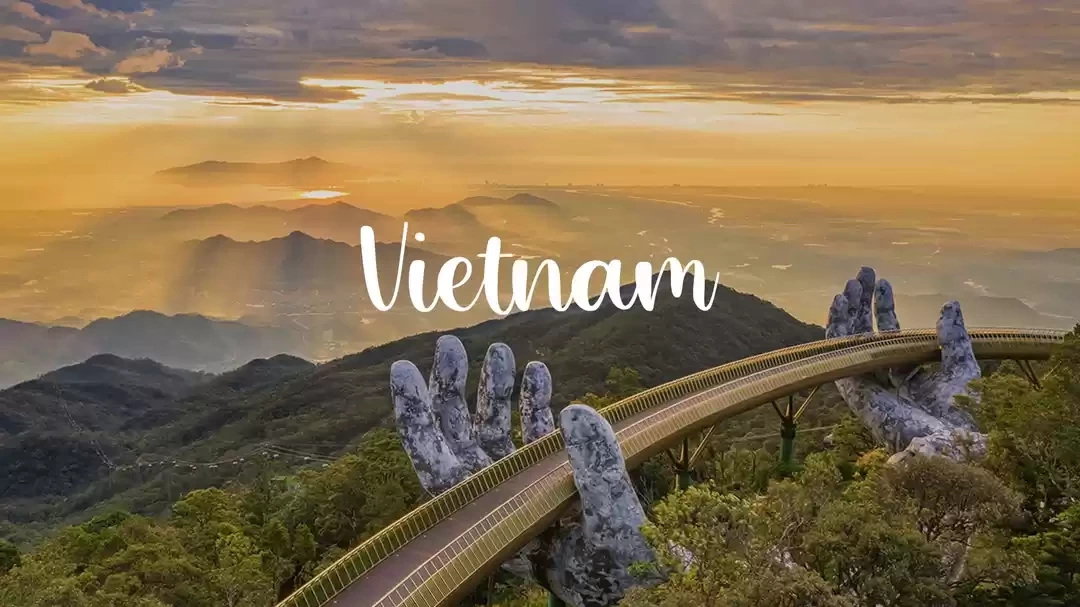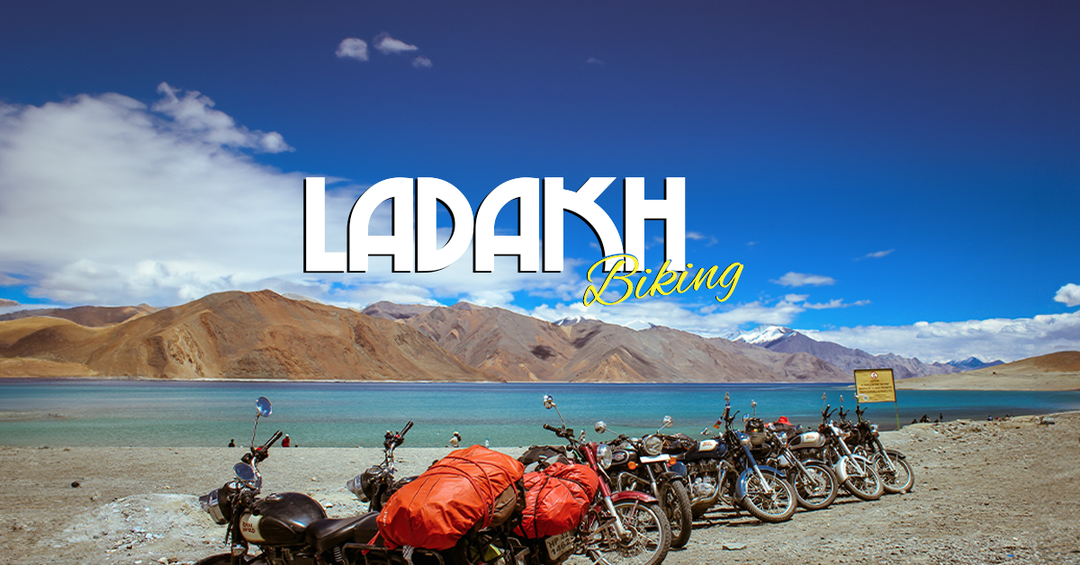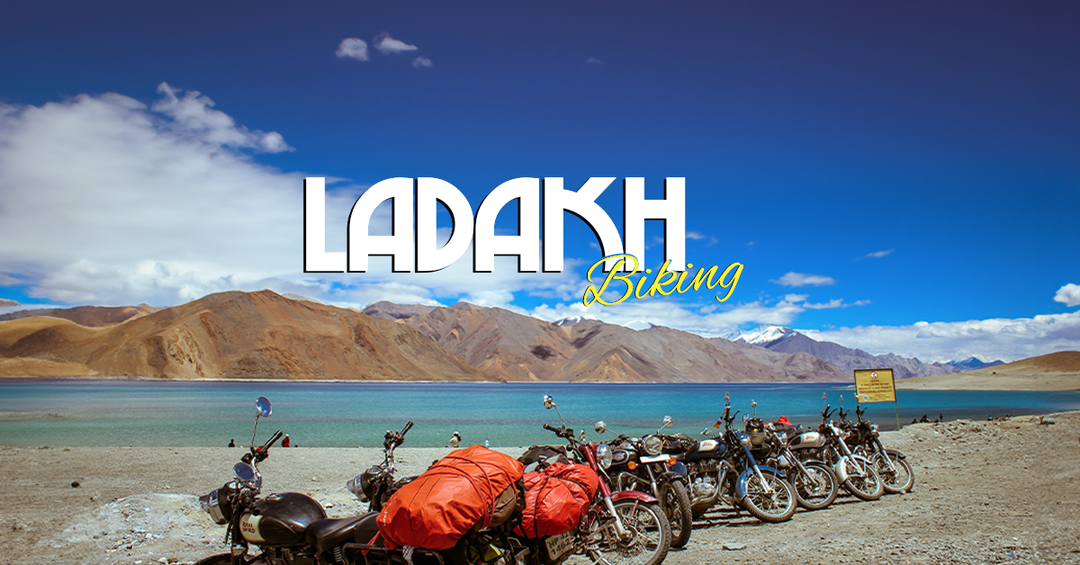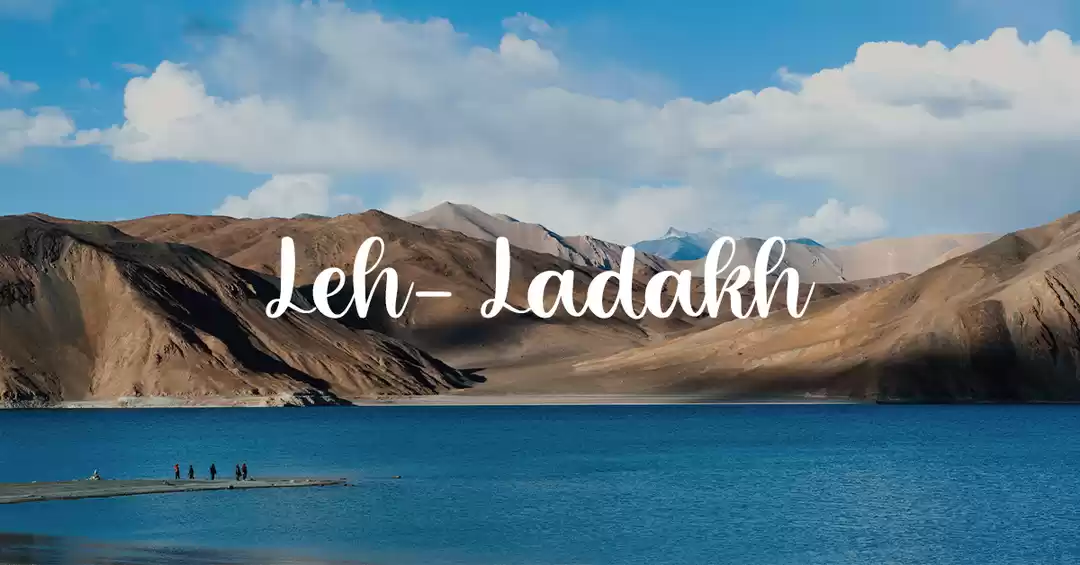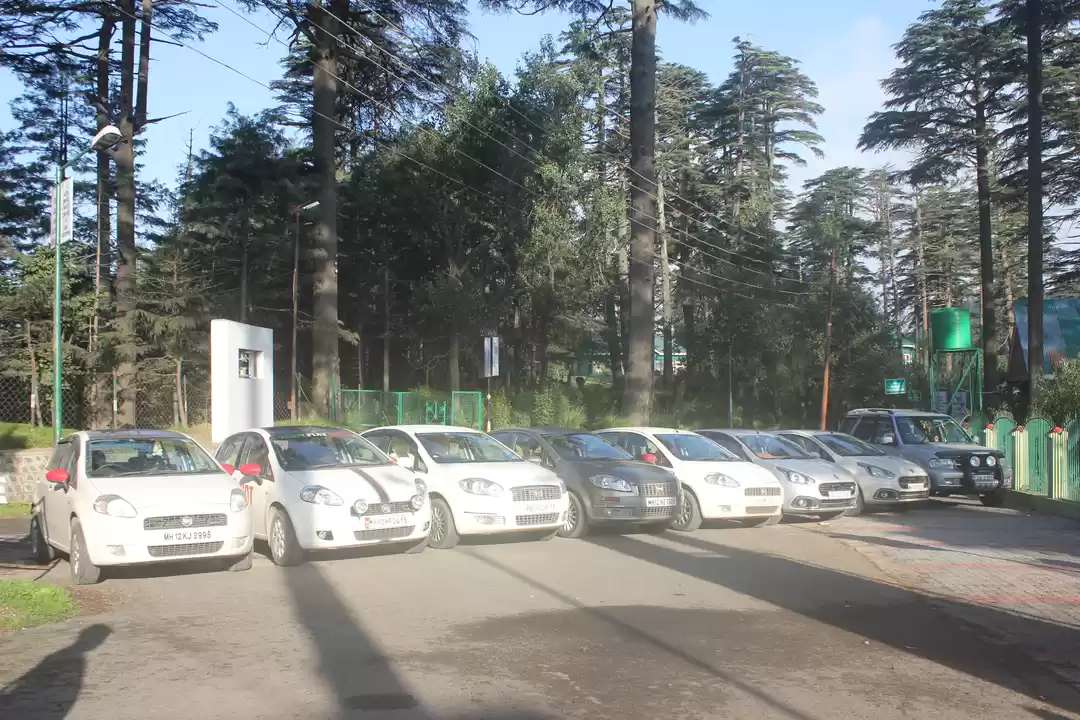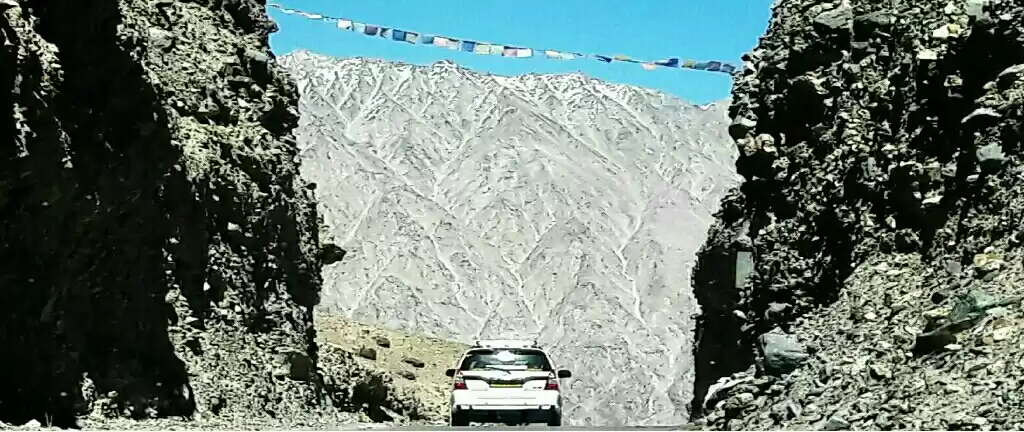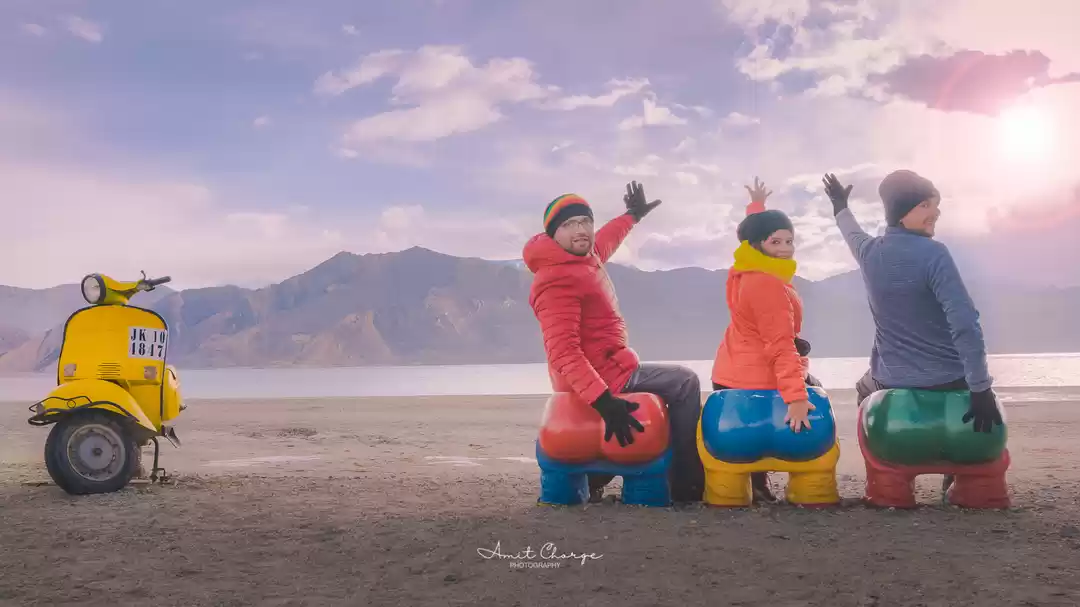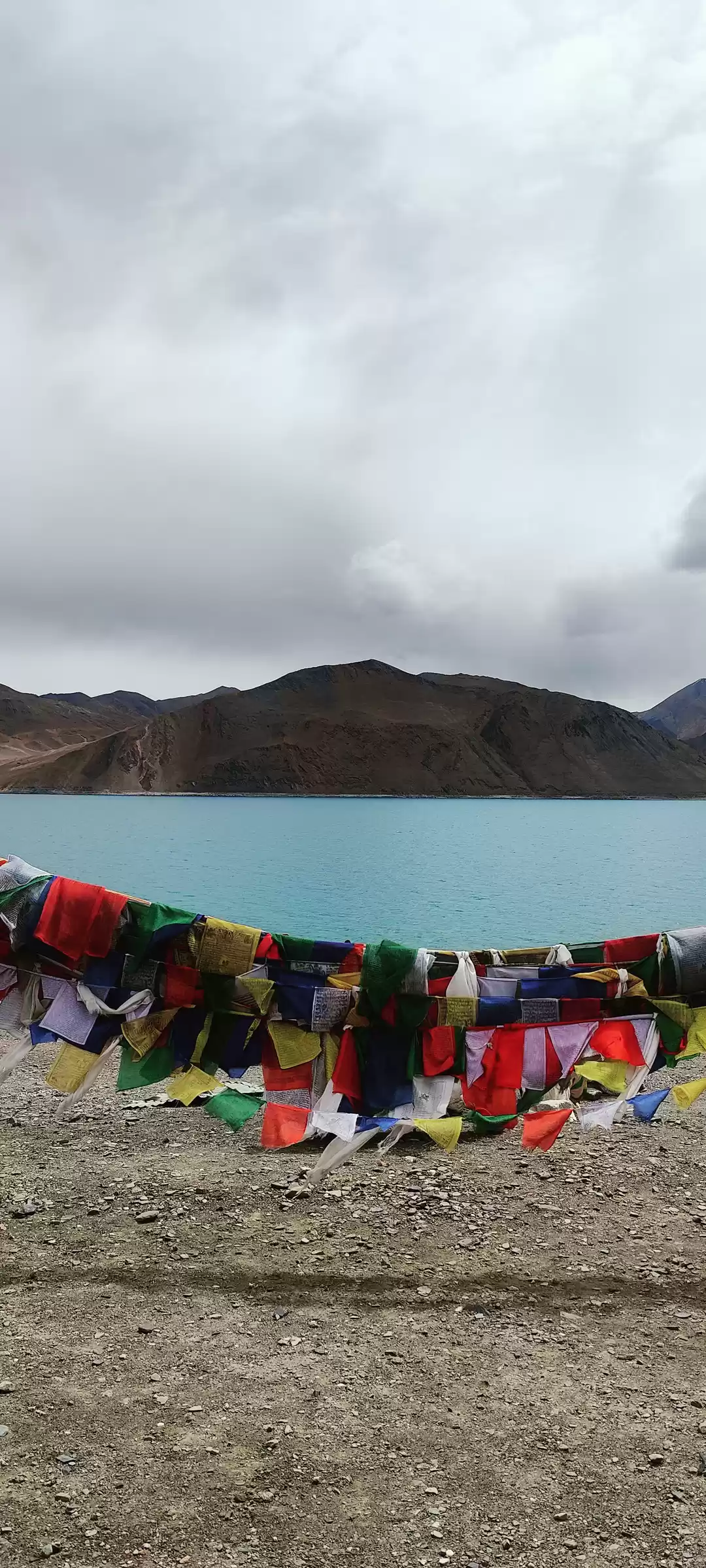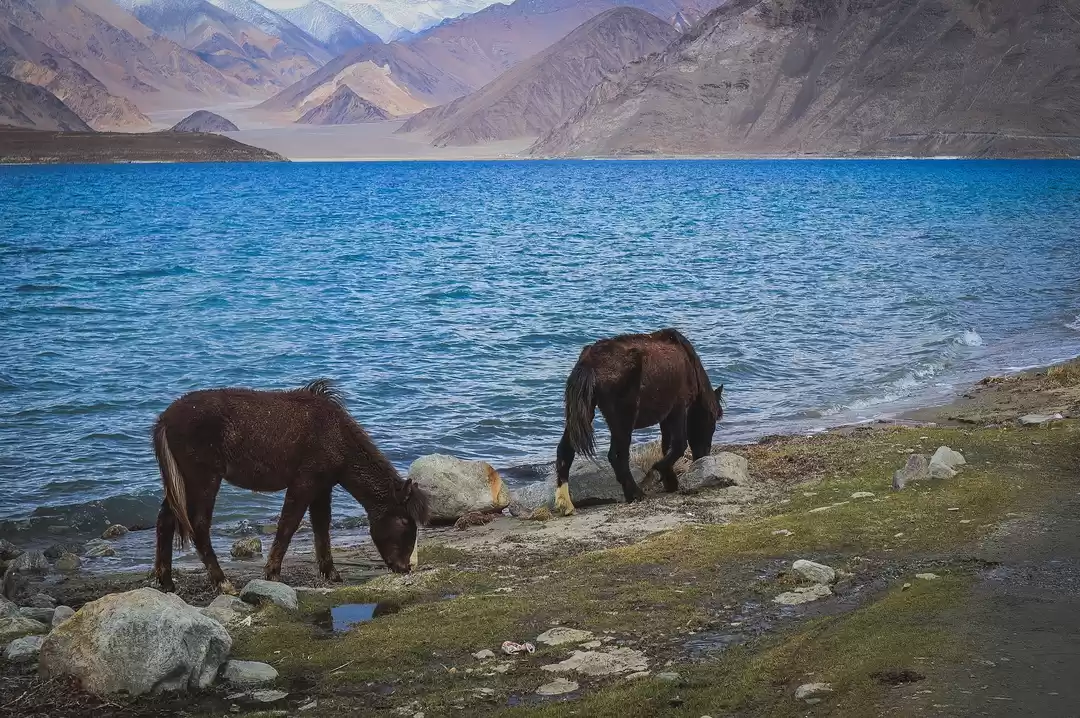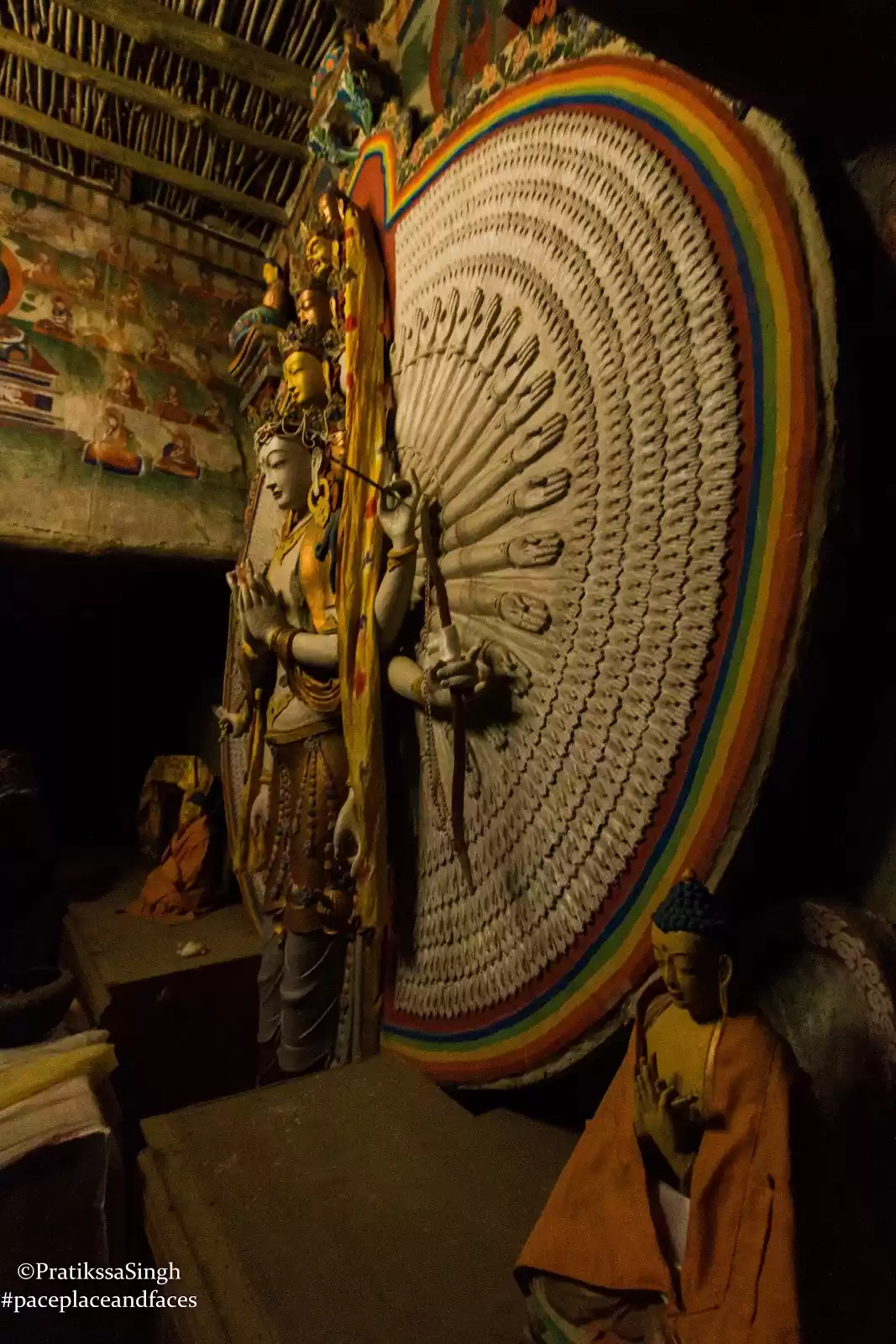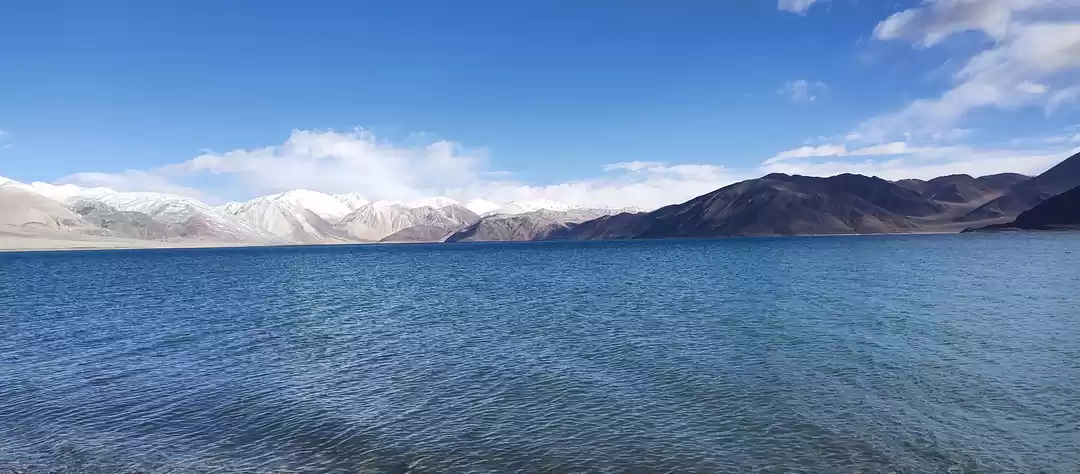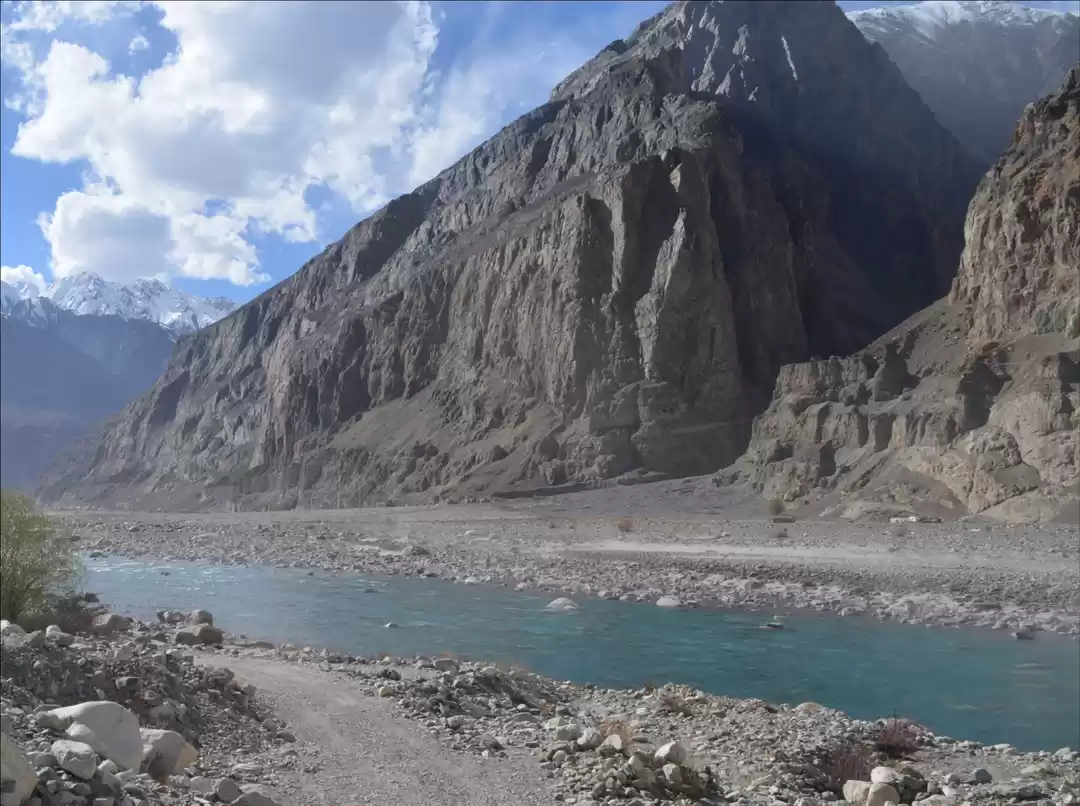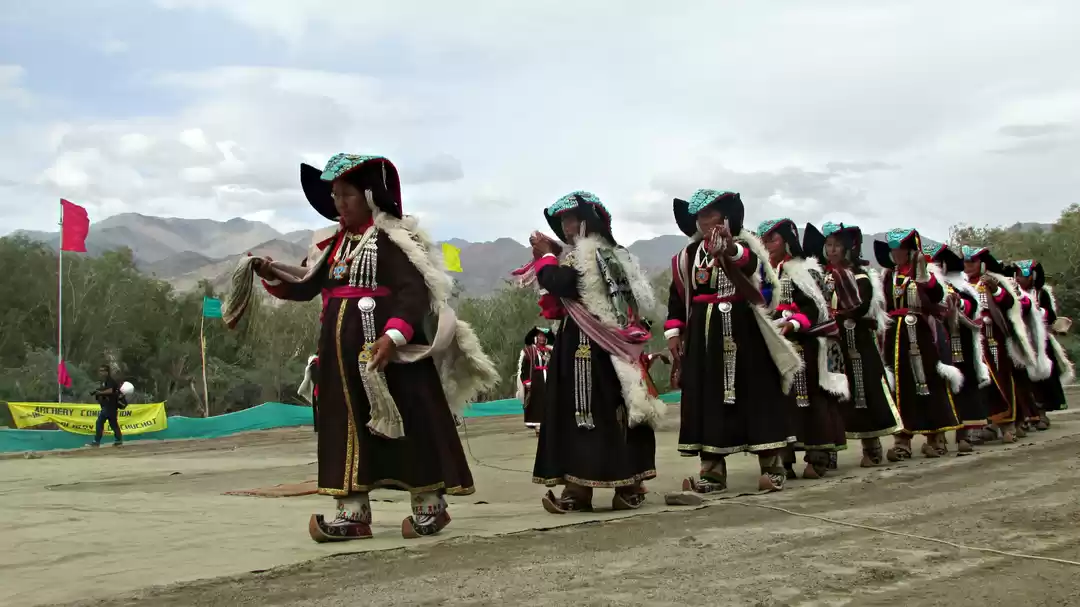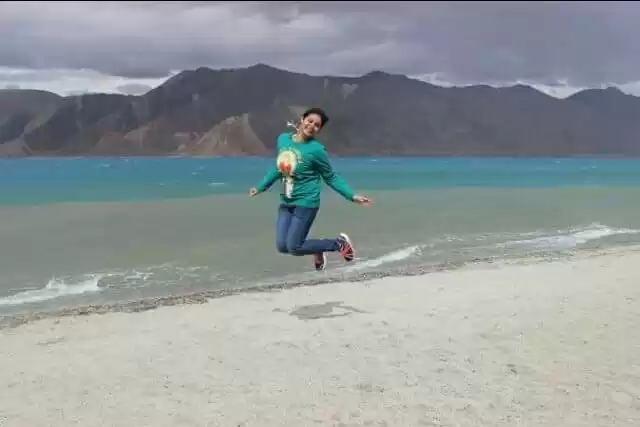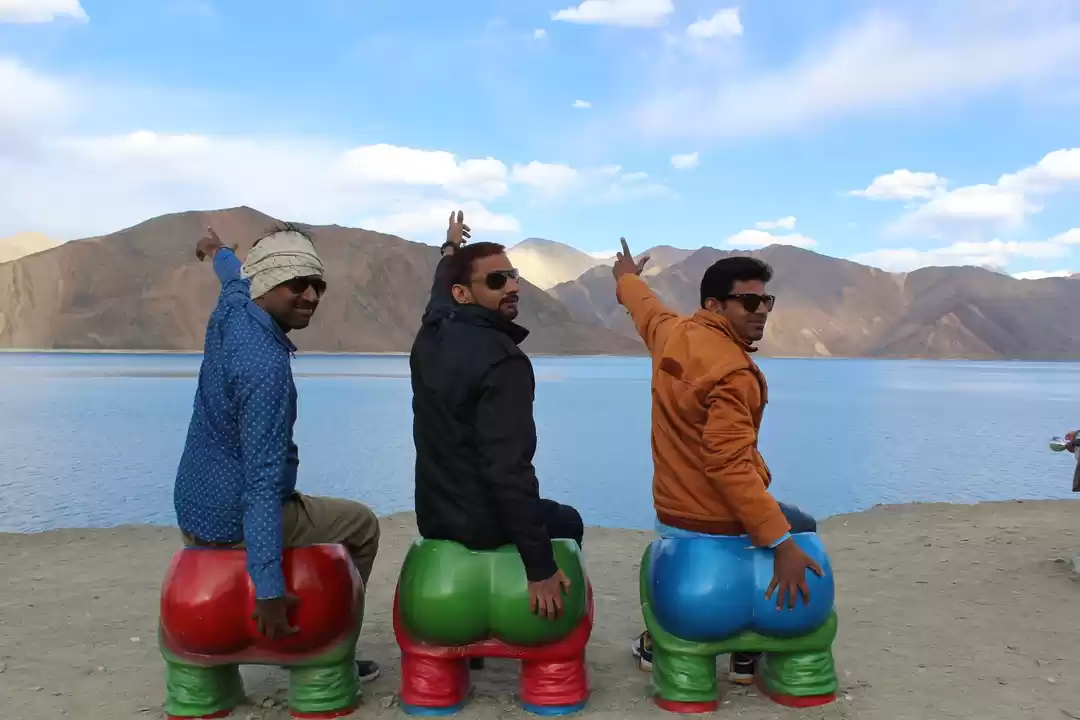It's said that roads are made for journeys, not destinations, and our Leh-Ladakh adventure was nothing short of spectacular. The tranquility and surrealism that I experienced over a span of 9 days made me feel alive and explore this place as a traveler, not a tourist. Of all the places that I've explored to date, this journey is going to rank amongst the top of my memory chart.

Chapter 1: The build-up
Since the time my wife (Shruti) and I got hitched, we've been dreaming about Ladakh and wanting to experience this destination. We knew one trip wouldn't be enough to cover all bases and indulge in the kind of un-touristy travel that we primarily seek.
Somehow, the timing didn't appear right as the years passed, and then finally, without further discussion and back and forth, we mutually agreed to do this trip in August 2022. The decision being spontaneous demanded immediate planning. It was obvious we aren't going to enroll with any tour group, which meant donning a travel researcher's hat and diving into the little details that Leh-Ladakh has to offer.

My research led me to some interesting homestays and places in Ladakh and I decided to reach out to some of them for a better understanding of how our travel itinerary could be prepared. One of the homestay owners (Stanzin) was prompt and helped me plan a detailed day-by-day itinerary. I was impressed by his proactiveness and genuine interest that I ended up booking our stay with him. And, I was glad we did it!
Once all bookings were done, the wait was on for August. When the day of travel finally arrived, we were totally pumped up and excited for this long-awaited journey into the unknown. What remained to be seen, of course, was the thrill 'n chill we're be subjected to over the course of 9 days.
Our flights until Leh were fortunately on schedule and we didn't have to worry much about getting delayed. Thereafter, began our long awaited trip in the Leh-lands.
Chapter 2: The touchdown - Entering the Leh-lands
Butterflies in my stomach, slightly elevated heart beats, and the smile of an excited 5-year-old ensued as our flight landed on the runway of Kushok Bakula Rinpoche terminal in Leh. As the flight was coming to a halt, the first sight to behold was the clear blue sky above. Being a city monger has its advantages, but one misses out on pollution-free air and the clarity that the big bold sky has to offer.

The bright blue with sifting white clouds left me gaping and I was desperate to exit the flight and breathe in the fresh air. Upon exiting the flight, a cool breeze brushed across my face and instilled a sudden burst of energy.
As I made our way down the steps, I heard one of the flight on-ground personnel alerting passengers not to take any photographs or videos. However, some oversmart individuals have a mind of their own and believe that rules don't apply to them. I was impressed to see the woman catch them red-handed and asking them to delete the videos and photographs in front of her. They apologized, but she wouldn't budge until they deleted it. A part of me wanted to personally go up to her and congratulate her for doing her job responsibly.
After walking into the terminal towards our baggage belt, I noticed several Bengali folks huddled and engaging in conversations around network connectivity and operators. Shruti and I were amused by these talks and we didn't need to eavesdrop as the voices could be heard loud and clear. Another 20 odd minutes were spent in waiting for our bags to arrive, following which we exited the airport and contacted our booked cab driver. Stanzin had already made the necessary arrangements.

I took the front passenger seat of our cab while Shruti got comfy in the backseat. As soon as we left for Stanzin's homestay, I was amazed by the landscape that met my eyes. The wide roads with no ongoing construction or potholes were a treat to witness. I took out my phone and start video shooting. Little did I realize that I'll end up capturing more videos than pictures of this road trip in the coming days.
As the cab maintained a steady speed of around 80 km/her and maneuvered the curves, we crossed the outskirts of different villages and attractions. Of note were the Shey and Stakna monasteries and Rancho's school. These were part of our exploration trail anyways and we knew we'd be back on this route soon. Considering this was the main highway that connected rural routes within Leh, both sides of the road were bustling with shops, hotels, and general stores at regular intervals. At one point, the valley opened up even further (without gaining any altitude) and I noticed the differentiating landscape comprising vegetation, housing properties, white sand and grit, small streams, and the distant rugged mountains - everything in ONE frame!

While this scenery may be natural for the locals (and they might no longer be intrigued by Nature's bounty), this is no joke for a traveler setting foot on new lands and explorations. What was even more interesting was the changing, rather evolving landscape on either side of the road. As I focused my attention to the left and noticed mounds of sand for miles with mid-ranged peaks in the distance, which were devoid of any vegetation and may have stood the test of time through years of erosion, rainfall and associated climatic changes, the area to my left had shrubs and trees even on the peaks, indicative of human inhabitation at higher altitudes. The presence of a tree line was evident, but what amazed me was the ruggedness of the terrain, regardless of the extent of flora, which was so different than the numerous landscapes that I have covered in Himachal and Uttarakhand.
While I was attempting to mentally capture the aura of the surroundings, our cab slowed down and took a right turn to enter our homestay. Advertised on Airbnb as a hut with the best view of the hills and the river Indus, Stanzin's place stands out for travelers whose idea of luxury resonate with simplicity in life's little offerings. No lavishness; no extravaganza; but coziness, hygiene, and solace with a view and some furry friends! Their huts are simple and contain all basic amenities that one can hope for. A small sitting area outside each hut makes you relaxed as you soak-in the view of the neighboring mountains and greenery. The Hemis monastery meets your eye on the other side, while the river Indus flows beneath your feet. Its meandering and gentle flow felt like music to my ears.

After our meet and greet, one of Stanzin's staff helped us with our baggage. We got to talking and mentioned that we'd like to head to the market after a quick lunch and start sightseeing from the following day. Stanzin arranged a cab for us. Moments later, a black furry puppy spotted us outside out hut and ran to determine if we were worth visiting its territory. We would later scratch our heads to figure out why would it would be named Sumo. If friendly bites, earnest licking and promptly waiting to be fed with almost anything comprise the key attributes to be tagged as Sumo, then she fit the bill. She sniffed around and made herself comfortable. We spent some time playing with her until lunch got served.

Lunch was homely and simple. Just what we needed to get through the rest of the day. Our cab arrived and we left for Leh market.
Chapter 3: Market scenes in Leh - a bustling sensation!
Having explored markets in hilly destinations in the past, a part of me knew what to expect. But, once we were reaching closer to the drop-off point, I was pleasantly surprised to see the stringent and organized traffic sense of the locals. To top it all, the narrow and busy roads were so well connected with clear one-sided entry and exit signs (which were being religiously followed by commuters) that we felt we had entered some fantasy world.

At a later point, when I expressed my genuine appreciation of organized traffic and the rules of the land to Stanzin, he mentioned that people there get flustered and irritated even if the traffic halts for 5-10 minutes. City mongers like us would literally laugh this off or not even notice this nonexistent delay, but it's a big deal in the Leh-lands. With social media and distinguished opinions being rampant across the city, it doesn't take long for matters to escalate and reach the concerned authorities. While some may take undue advantage of this system of functioning, the "commuting sense" is certainly progressing on the right track.
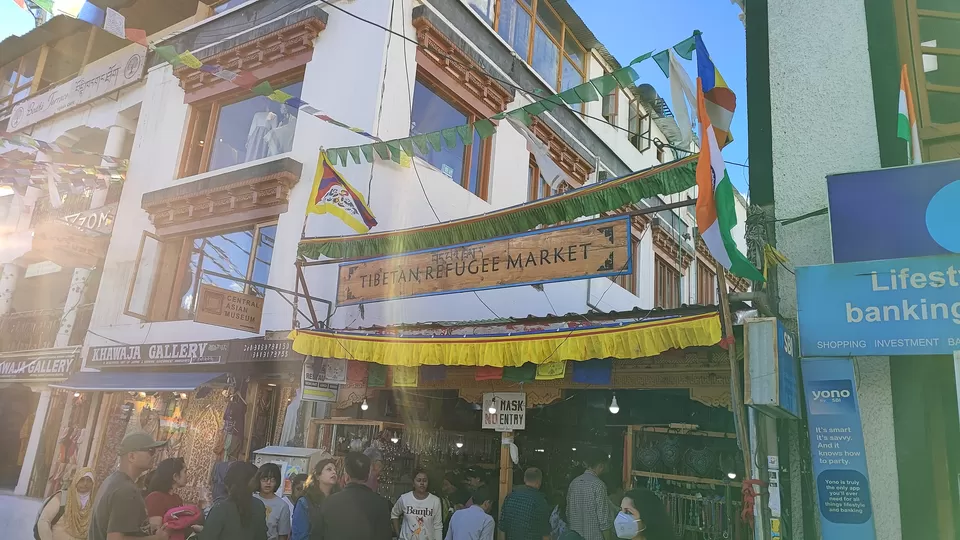
By the time we arrived, the market was bustling with people and tourists. Vegetable sellers, shop owners, and restaurants were busy engaging with several folks and making the most of the beautiful evening drawing to a close. As we made our way through the market, we frequented visits to outlets that drew our attention. The Tibetan Refugee market and Kashmiri Emporium topped the charts. We later entered another lane and came across some interesting souvenirs, which now deck our living room. As one looks beyond the buildings and sets eyes above ground level, you notice the towering Leh Palace on the adjacent hill and a clear view of the distant and partially snow-capped peaks. Our evening rooftop restaurant, Il-Forno, gave us the best seats in the house, as we feasted on freshly prepared wood-fired pizza and coffee. The Leh Palace, by now, was lit up, and given that Independence Day was 2 days away, the image of the tricolor across one end of the palace wall was spellbinding.
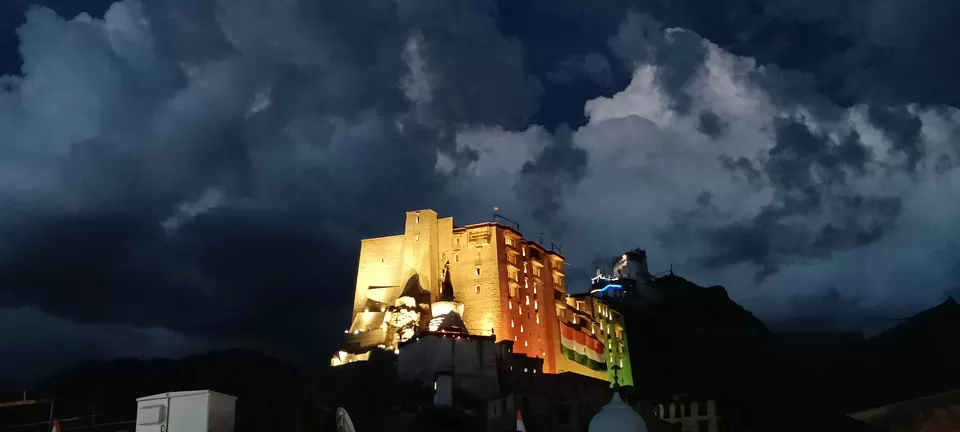
As dusk set in, we walked back through the now lesser crowded market by lanes towards our car. Our first day in the Leh-lands was well spent and eventful. This high altitude destination was already luring us with its charm and freshness.
Once we were back at the homestay, the clear moonlit sky was a treat to the eyes. One could see the sky filled with stars and possibly conduct a crash course on astronomy. But, the real astronomical experience was yet to be experienced! More on that later.

Chapter 4: Of road journeys, monasteries, and local delicacies
After a simple breakfast of bread, eggs, and butter tea (Ladakh special), we left for general sightseeing. We had quite a bit to cover today and started with the Hall of Fame, located 4 km from Leh. Hall of Fame is a museum constructed by the Indian Army in memory of the brave Indian soldiers who laid down their lives defending the country in the Indo-Pakistan wars. The museum comprises two storeys and is divided into various sections containing several displays. One can see the various weapons used in the Kargil war, along with the various arms and ammunition captured by the Indian Army during the war. The ground floor contains pictures of the Kargil War on the walls.

A couple of Indian Army officers walked the people through the different regions and Army checkpoints along with the details of how the Indian Army captured them during the wars. The pictures provided an elaborate and fascinating account of how the Indian Army fought the war. It was quite moving as one gets reminded of the enormous sacrifices made by our soldiers to ensure that our country is safe and secure from foreign invaders. One particular letter titled "The Last Post" framed on a wall caught my sight. This was written by Captain Vijayant Thapar to his parents some days before he attained martyrdom. On reading the letter, you are overcome by a profound sense of grief and pride, while your eyes well up with tears.
Before we exited the gallery, we crossed a section dedicated to the history, culture and other associated facts of Ladakh. There's a souvenir shop as well.
After spending around 30 minutes here, we left for Spituk Monastery, which to my surprise was so strategically located atop a hill that one could easily view the flights take off and land on the Leh runway. Mind it! We actually waited an extra 20 minutes to see if we can capture one on video. We did manage to do so.
Spituk Gompa or Pethup Gompa is known for its giant Kali statue that is revealed on the annual festival of Gustor. The monastery now comes under the Tsongkhapa order (Gelug or Yellow Hat) of Tibetan Buddhism and is home to 100 monks. The premises house a museum that has a wide collection of ancient masks, antique arms, other icons and numerous thangkas (Buddhist paintings) making it an important attraction here.


Thereafter, began a somewhat longish road journey towards Alchi via the Magnetic Hill, which apparently is a gravity hill located on the Leh highway connecting other remote areas. Magnetic Hill has been fascinating travelers globally with its concept, which basically is created due to the layout of the area and surrounding slopes, thereby creating an optical illusion of a hill. The road is actually downhill, but objects and cars on this road may appear to roll uphill in defiance of gravity when they are, in fact, rolling downhill. Intriguing, indeed! We also happened to cross a go-karting zone on this hill road that has been successfully attracting people interested in this activity. In hindsight, I think I should have experienced it, but I was keen on making it to Alchi and continuing with our explorations.
Alchi Monastery or Alchi Gompa (also Alci) is a Tibetan Buddhist monastery, comprising four separate settlements in the Alchi village in the lower Ladakh region with monuments dated to different periods. Of these four hamlets, Alchi monastery is said to be the oldest and most famous. It is administered by the Likir Monastery. The complex within the monastery has three major shrines: the Dukhang (Assembly hall), the Sumtsek and the Temple of Manjushri, all dating from between the early 12th and early 13th centuries.

After a brief exploration of this famous monastery, we walked outside just in time to savor a lunch destination that I had bookmarked even before landing in Leh. We entered Nilza Wangmo's Alchi Kitchen without a table reservation and hoping to find a small corner to relish Ladakhi cuisine. We managed to find the perfect spot on the balcony - private and comfortable! We dived right into the local delicacies, including Khambir (fermented Ladakhi bread) and Chutagi (local Pasta). We just couldn't get enough of the refreshing apricot juice made from their farm produce. Since they prepare everything from scratch in their open-style European kitchen, one can stand and observe the food being cooked by Wangmo's all-women staff. People were pouring in large numbers in this small but cozy setting on the first-floor. We also learnt that Nilza's home was on the ground floor. Our travel from Leh to Alchi was now justified and satisfactory.
On our way back, we stopped at one point to observe the river confluence of Zanskar and Indus. While much has been said about this merger, we were unfortunate to witness a muddy and indistinguishable confluence given the time of the year. I believe the months of March-May are more suitable to view the merger and varying colors of both rivers. We were dropped off at Leh market within the next couple of hours and we spent the evening at Rabsal Cafe before being driven back to our homestay.

Chapter 5: Beauty lies in the eye of the beholder...
Today was meant to be another day of sightseeing. We left for Stakna, also known as Tiger’s Nose due to its resemblance to it, situated around 25 kms from Leh. Stakna is a small monastery in Leh established by a Bhutanese scholar and saint, Chosje Jamyang Palkar in 1580. This monastery sits on the left banks of the river Indus. Its co-monasteries are Stakrimo, Zanskar-Bardan, and Sani. One is permitted to visit the special library near the Stakna Gompa where the gilded statues and paintings of the erstwhile Rinpoche are kept. In keeping with their traditions, we observed that a prayer was ongoing in one of the rooms, and sat down for a few minutes alongside few other folks. The technique, though unfamiliar to me, was calming and reassuring. Next, we climbed up to capture a beautiful view of the Indus Valley. Also, climb up the monastery to behold the beautiful views of the Indus valley. The statue of Arya Avaloketesvara, paintings of Bodhisattva, Padma Sambhava and Tshong-san-Gompa as well as Dukhang Assembly Hall with paintings of Sakyamuni and other artefacts are also worth viewing in the monastery.

The transfer from Stakna to Shey was a short one. Unlike other monasteries that we observed, Shey consisted of a monastery and a palace, and was once the summer capital of Ladakh. This monastery is known for its giant copper with a gilded gold statue of Shakyamuni Buddha, which is said to be the second-largest statue in Ladakh and a must-see. My adventure seeking spirit led me outside of the premises to some shambled ruins of the monument. A rough patch uphill was leading to a potential view point, but I just couldn't go beyond a certain point as I was wearing the right footwear. After all, my trekking shoes were not packed for this road-cum-backpacking adventure. Anyways, I had to pacify my adrenaline streak before we departed Shey and moved towards Thiksey.

Thiksay Monastery is located 19 kilometres from Leh on a hillock overlooking the Indus Valley with a magnificent view of the Stok range. It was found in 1433 AD by Spon Palden Sherab with his Master Jangsem Sherab Zang, one of the six contemporary disciples of Lord Tsongkhapa. If history was ton be believed, Tsongkhapa had once prpohesied, "My doctrine will flourish along the right side of the Indus River." This prophecy came to realization with the establishment of the first Gelugpa monastery at Thiksay followed by many other large-scale monasteries belonging to the same order such as Spituk and Likir monasteries, all located on the right side of the Indus River. We were attracted to Thiksey's grandeur and history and this monastery sure has an impact on the rich cultural tradition and heritage of Ladakh.

Within a few kilometers of Thiksey, lies Rancho's School (local name: Druk Padma Karpo School or Druk White Lotus School), popularized as a result of the massive Bollywood blockbuster, 3 Idiots. The building wall where “Chatur” (one of the characters from the movie) was given an electric shock by young students is now famous as Rancho Wall. The premises has a “Rancho’s Cafe” too.
The school is officially named after Mipham Pema Karpo (1527-1592), who is revered as a great scholar. It was established on the request of local people who wanted children to learn and maintain rich cultural traditions based on Tibetan Buddhism while giving them rich education to match the 21st century as well. The school is managed by Druk Padma Karpo Educational Society, and judging by teh construction work ongoing on its premises, I believe there is scope for expansion.

The few people who were around didn't miss a chance to get themselves clicked against the graffiti depicting scenes and dialogues on the walls. I was also glad to learn that the main campus and classrooms were off "tourist limits." Had that been open, people would have ended up disturbing the peace and purpose of the place in an attempt to get Insta-worthy pictures.
Having reminisced the brief Bollywood scenes and having a hearty laugh over those funny moments from over a decade ago, we bought a couple of souvenirs from the small store on the premises and headed towards Stok.

Stok Monastery is one of the most popular Gompas in Leh and is located about 15 kms away from the main city. This used to the royal residence once upon a time and belongs to the yellow - hat sect of Buddhism. The entrance veranda has beautiful mural paintings of the guardians of the four directions while the main assembly hall is decorated with thangkas and banners. One of the large halls in the palace has been converted into a museum, which has a wonderful collection of thangkas, royal crowns, dresses, coins, antique ritual objects, ceremonial sword, precious stones and traditional head dresses worn by Ladakhi women. The courtyard at Stok Gompa consists of a large number of prayer wheels. As with some of these tourist-cum-heritage sites, a small cafe dons the courtyard, giving people an opportunity to enjoy the scenic valley views whilst sipping hot coffee or tea and some light snacks.

The walls of Stok are decorated with images of Tara (the Saviouress), Vajrapani, Sakyamuni (Buddha), Nangyamal and Amchi (Medicinal Buddha) and Avalokitesvara (with 1000 hands and 11 heads in the painting). This monastery is famous for its big library. The library has a complete set of the Kandshur, the 108 volumes of the Buddha’s teachings. A chapel exists inside the monastery, which is believed to be the oldest in Ladakh.
The exploration thus far was quite balanced without the need for rushing at any destination. We decided to take a halt for lunch and treated ourselves to some local dumplings and freshly prepared Ramen soup at Maryul Cafe in Leh market. A couple of fresh lime sodas helped us beat the heat and remain hydrated.

And then, we were off to Shanti Stupa - a monument built to promote world peace and prosperity as well as to commemorate 2500 years of Buddhism. Perched on the mountain top, this religious place also offers a panoramic view of Leh and the surroundings. Built as part of the Peace Pagoda Mission by the Japanese Buddhist, Bhikshu, the Shanti Stupa contains a relic of Buddha underneath.

After a well-spent "touristy" affair over the past couple of days, our final pit stop led us to the place where it all started. We headed back towards the bustling Leh market and proceeded up a hill towards the towering attraction, Leh Palace.

Also known as Lhachen Palkhar, Leh palace is located atop Tsemo Hill, and was formerly a palace of the royal family of Leh. It was erected in the 17th century and was one of the tallest structures with 9 storyes during its heydays. One can soak in the views of the distant Stok Kangri, Ladakh mountain ranges, and the town from here. Restoration on some of the floors is still underway by the Archaeological Survey of India’ (ASI).
Leh Palace was constructed by Tsewang Namgyal the founder of the Namgyal dynasty of Ladakh in 1553. While the upper floors of the palace were used as the residence of the royal family members, the lower floors consisted of stables and storerooms. As history states, this palace has faced its fair share of wars and massive damages.

The palace serves as a wonderful examples of the medieval Tibetan style of architecture. Its walls are made of mud, wood, sand and stones. Though slightly in ruins, the small compartments, carved entrances, spacious rooms and expansive corridors haven’t lost their charm. The bigger corridors and rooms have now been turned into exhibition halls. There are some charming murals on the palace walls, depicting its magnificence in those times.
Leh Palace is also an important center of the Buddhist religion as well as culture. The palace also comprises a monastery that features a statue of Lord Buddha. Thangka paintings don the exhibit halls of the palace, with some of them as old as 450 years and made with powdered gems and stones. A collection of royal jewelry, ceremonial dresses, and crowns can also be seen in the palace.

Another eventful day came to an end as the sun bid farewell and we descended the hill past several vehicles and people to find our driver. It was time to get back to our homestay and pack our bags for the coming days.
Chapter 6: When BRO welcomed us to the top of the world - Khardungla Pass
This day, that year will be remembered as the time when we made our way to the highest motorable pass in the world - the one and only, Khardung La. We had an early breakfast and were ready to leave on our next adventure in this fantasy land.

Located at 40 km from Leh and at a towering altitude of above 18,000 ft, this pass connects Leh and Nubra Valley and also serves as a gateway to the famous Siachen Glacier. Historically, it was a major caravan route from Leh in India to Kashgar in Central Asia. We were hoping to see several bikers and tourist vehicles along the way, and that was the case as we slowly started gaining altitude. Regular pitstops had to be made to capture an aerial view of the long winding trail that we were gradually leaving behind.
While we were expecting tons of folks at the highest point, it wasn't that bad. We got our chance to get some photographs and quickly absorb a full view of the neighboring rugged mountains. The temperature and accompanying winds, as one can expect, was bone-chilling, which obviously meant that it wasn't a wise idea to hang around at that altitude for too long.

After a brief halt, we descended towards North Pullu, but not before stopping at one of the smaller hotels by the army camp to have a hot cup of tea and hot maggi. Mankind's best companions were on their routine rounds and graced us with their presence. Of course, they were given treats to ensure we're remembered. Haha!

Without further delay, we headed straight towards Siachen.
Chapter 7: Stories of valour and courage - The Siachen experience
The journey to the world's highest, deadliest and costliest battlefield was a long one as we were on the road for the next few hours. We made one halt at Panamik hot springs, which I'd like to believe was the only minor disappointment (only in terms of the attraction) in our wholesome adventurous trip. The reason I say this is that the brief halt here was sober enough to curb my hunger with local dishes, but the hot spring experience wasn't exactly enticing or "hot," if you know what I mean.

Panamik is popular for being the only hot water spring village in India. While the surroundings are charming and a treat to the eyes, I was wondering where the hot spring pool was located. Upon entering the premises, I got to see a small building, which in fact, was a bathroom with showers installed. On further inquiry, we got to know that the water from the hot springs were connected via pipes and those who wished to get a rejuvenating experience at this altitude could jump in the shower for a meager 20 bucks. Not the kind of "hotness" I was looking forward to, but maybe some rules may have changed over the years. After all, it's a self-sustaining village that must prioritize its existence and needs over tourists' eagerness to venture into a hot dip.

After this final halt, we entered the Siachen Warrior zone and made our way to the farthest point accessible. This was basically a bridge beyond which tourists weren't permitted since the Indian army barracks started. A glimpse of the famous Siachen glacier could be seen from here. A chill does run down your spine as one wonders how the brave Indian army survives such harsh weather conditions and protects us from invaders.

We managed to click a few photographs before resuming our journey to Nubra valley.

Chapter 8: The crossover to Nubra
As the days rolled by, we were trying to keep up with the changing times and it seemed like we'd been on the roads for days at end. But, there was much left to see and experience in this wonderland.

Widely known as a beautiful cold desert, Nubra valley lured us instantaneously as we were captivated by its uniqueness. Since our plan was to quickly check into our homestay in Sumur Valley before proceeding to Turtuk and Thang during the day, we had plans to cover Diskit and Hunder on the way back in the evening.
As we were entering a quaint and somewhat hidden neighborhood with tall trees laden across farmlands, the rugged yet mesmerizing landscape could be easily distinguished from the earlier part of our journey.

Our homestay in Sumur village was tucked away from the usual hustle in the sand dunes of Hunder. The tastefully done interiors coupled with the overall cleanliness of the home and hospitality of the caretaker, Padma ji, made us feel homely. Not to forget her amazing cooking skills as we feasted on local delicacies, including Khambir and Sku, after an eventful day. The freshness of their home (read: farm)-grown veggies is still lingering on my palette. Oscar, their friendly pet dog, played her part as well by accompanying me on my walk the following morning and ensuring that she gets pampered all along.

After quickly freshening up, we left for Turtuk and Thang.
Turtuk is a small border village located just 8 km from the Pakistan border. It is known for its scenic beauty and cultural heritage. If you are visiting Turtuk, stay at one of the many homestays and experience the unique culture of the Balti people.

Chapter 9: Where signs read "you are under enemy surveillance" - Turtuk and Thang Chronicles
The route to the last village on the India border required us to travel through the villages of Hunder, Thoise, Skuru, Changmar, Bogdang, Chalunka, and Tyakshi, and Turtuk.

Turtuk is a small hamlet situated at the far end of the Nubra Valley and has the Shyok river flowing right through into Baltistan and Pakistan. The neighboring and high peaks of the Karakoram range serve as the barrier between both countries. The Line of Control lies ahead of this village and as one approaches the last village of Thang, one gets a glimpse of Pakistan's first village, Franu, beyond no-man's land. Although Turtuk was part of Pakistan until 1971, the Indian army occupied this village during a border war and never gave it back for concerns around border security.
The views from the village are scenic, but given its location and the tumultuous history that the locals from either side of the border have had to face over the years, a general sense of uneasiness, gentle sleepiness, or sadness prevails. Not that this region is constantly living in apprehension and fear of a potential war breaking out at some point, there has been carnage that has led to families being split and loved ones deceased. Imagine living barely 2.5 kms from the Line of control that you cannot pass!

Our brief interaction with one of the hotel owners in Thang made us feel the pain and suffering they have had to endure. They don't blame either country but the fact that their ancestral lands were lost in the war and their families are now surviving cross-borders does make one wonder about how challenging their lives might be. They seem happy and content over the years but deep down their hearts and souls are saddened by the hardships and loss they've had to bear.

Since Turtuk is a Balti village (Baltis: An ethnic group of Tibetan descent who mostly live in Pakistan's Skardu region), the villagers are Noorbakshia Muslims, a Sufi sect of Islam, who speak Balti (a Tibetan language). Turtuk was opened up for tourism in 2010, allowing outsiders to see a unique village and way of life. As we passed the village, I noticed elaborate stone homes that have most likely been built by cutting the Karakoram rock walls. With regards to vegetation, the soil and climate allows for barley and buckwheat to primarily grow here. My taste buds were inkling to have a local treat and we found just the right spot for lunch as we were treated to Chhathuk Balay (looks similar to packed noodles but handcrafted and better tasting), Keser (made of buckwheat) with Tsamik, butter keser, and Phadingi Baley (an apricot-heavy sweet dish that is served hot).

Chapter 10: Different landscapes, one frame - Nubra, you beauty!
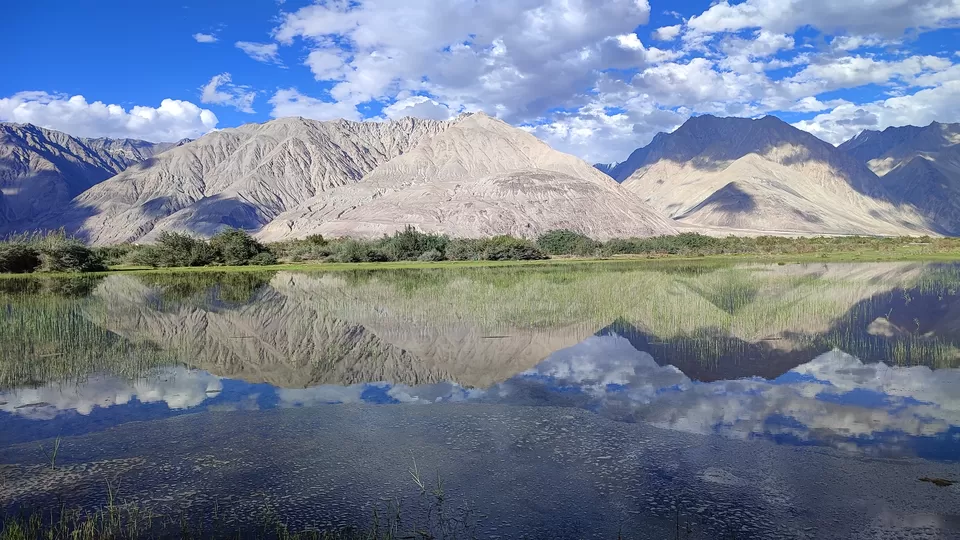
On our return to Sumur valley, we stopped to visit the famous Diskit Monastery. The most striking feature of this gompa is the 106-foot-tall statue of Buddha, which is visible from afar. After catching a panoramic glimpse from atop, we continued towards Hunder. While we weren't really keen on riding on bactrian camels, who are natives to this region, we managed to notice tourists taking a tour of the sand dunes on them. These camels were the primary mode of transport on the ancient trade routes into Central Asia with Ladakh being a stopover.

Instead of spending more time in the commercial Hunder dunes, we decided to have a private rendezvous with Nature in the less popular Sumur sand dunes, within walking distance of our homestay. It took some struggle to cross a wet patch of grassland without damaging our footwear or clothing, but once we managed to do so, the view of these sand dunes amidst the backdrop of giant mountains was simply stunning.

A stream with clear waters made its way through and one could notice patches of green in the distance that complimented the ruggedness of the peaks. The striking part of all was capturing the mountains, greenery, water body, and sand dunes in one frame. It was like the perfect end to our day as we sat down on one of the dunes and saw the sun setting behind the peaks.

Chapter 11: The mother of all lakes - Pangong
Yay! Yay! Yay! Pangong Day arrived and our excitement levels had reached a whole new level. Our driver had informed us that an early start to the day would be preferable since a part of the road trip to Pangong will involve "off-roading." So, taking his advice into consideration, we bid adieu to Nubra and left for Pangong at 6 AM. Having to experience off-roading, which by the way, is a big hit among bikers and "Thar-lovers" in this part of the world, was definitely "offbeat" in an Innova. There were times when our Schumacher raced past fellow drivers leaving behind trails of dust. At one point, and this was after we departed from Pangong, we were actually and involuntarily participating in the Formula 1 "League of the SUVs" on the beaten winding mountain route for at least 8-10 kms.

Anyways, circling back to Pangong, our offroading thrills led us through steep and rocky climbs in between randomly flowing streams followed by more dirt and beaten tracks. A narrow well-paved road appeared out of nowhere after a few miles and the journey became normal. We were approaching a green patch by a flowing river when our driver suddenly halted by the side of the road. He mentioned something about a mammal inhabiting these alpine grasslands.

I didn't quite catch the name initially, but as we were stepping out of the car, he mentioned Himalayan Marmot. "Aah, I see!" were my exact words, and on walking ahead a few meters, I saw these cute short-furred and short-tailed marmots merrily and comfortably scurrying across the grasslands and nibbling on grass. While we were careful and didn't want to be intrusive, these mammals didn't mind being clicked or videographed. Some of them went in and out of their burrows while others made their way across the grasslands.

After this sweet "marmoty" experience, we continued towards Pangong. Since some parts are still under construction, and the fact that such high altitudes are also prone to landslides, our journey got setback by around 30 minutes as the roads were being cleared of debris. We were glad to have started early as this minor delay didn't impact us.
Soon after, the winding trails and bumpy body massages gave way to an approaching water body that we'd later come to know is 134 km long and 5 km wide, with 40% of its waters in Ladakh. Presenting the famous Pangong Tso with different and vibrant shades of blue that looked so spectacular that it felt like I was in the movies. The weather being perfect was an icing on the cake.

As the sun's rays fell on the calm waters of this pristine lake, one could easily distinguish between the hues at regular intervals. Our cameras were instantly put on a tripod stand to capture a time-lapse that would be saved for years. The best part about arriving earlier in the day was avoiding people and crowds. While Pangong permits camping by the lake, we had no such plans, which explains why we started early.

We weren't in a rush and spent almost 1.5 hours enjoying this fascinating art of Nature. We even had an early lunch before deciding to push to our next destination. I got complimented on my fancy Neeman's sneakers that matched the blues and hues of Pangong Tso. What can I say? A fancy destination calls for some fancy footwear.

After bidding farewell to Pangong Tso, we headed towards another high mountain pass, Changla, which by the way was spot-on "Changla" (marathi word for very good).
Chapter 12: Winding routes led to Changla
Adrenaline levels inside my body hadn't yet normalized after our Pangong Tso vibes, which telepathically enthused our driver to step on the gas and engage in a spontaneous race down the rocky mountain for almost 30 minutes, giving Shruti and I a thrill I can only wish to individually handle behind the wheel.

The traveling distance between Pangong and Changla isn't much. The terrain again is different considering it's the world's second highest mountain pass above 17,000 ft connecting Leh to the Shyok review valley. As we reached the highest point, we came across a solo cafeteria-cum-souvenir shop with a signboard indicating "World's Second Highest Pass" serving as the resting and view point for travelers crossing the valley. There wasn't much to see here except for the dried patch of snow on one of the adjacent peaks. We soon started our descent towards the small villages of Tangtse and Darbuk.

Chapter 13: The scenic entry into Hanle
Traveling to the remotest of destinations is invigorating and exciting as you aren't exactly aware of what's in store. After experiencing Leh-life for 6-7 days, my quest for exploring the unknown was exponentially rising.

Another long road trip to a small village in close proximity to the Tibetan/Chinese border awaited our arrival. Hanle is a historic village in Ladakh and is the home to the 17th century Hanle Monastery and the famous Hanle Observatory. It has over 300 households and this valley was believed to be a popular trade route between Ladakh and Tibet. The location of the village and the observatory are highly sensitive due to the close proximity of the Tibetan/Chinese border. The observatory contains the Himalayan Chandra Telescope, a 2m gamma ray telescope.

The long road journey, the initial phase of which covered winding trails with the stream flowing on one end, was soothing. Our driver, who I can confidently tag as a descendant of the Schumacher family, had strong regard for his Toyota Innova, which became his Ferrari for the entire duration of the trip. I honestly didn't mind the speed and thrill since the roads were impeccable and demanded speed on the curves.

The balance of alpine vegetation and gritty mountains soon gave way to narrower roads and and barren lands. The barren terrain had a charm of its own and reminded me of movie scenes that are shot in desserts. The road seemed never-ending as we sped at over 100 km/hr and crossed several villages, including Upshi, Likche, Himya, Kiari, Nurnish, Chumathang, Mahe, Nyoma, Loma, and Rango, before entering Hanle. The territory surrounding Hanle comprises the villages of Pongong, Naga, and Khaldo.

Our first stop was the observatory, wherein we got a first hand look at the famous Chandra telescope. We were explained about how scientists sitting in Bangalore receive data and updates from this observatory and take necessary actions on astronomical interventions and discoveries. Some images captured by this telescope were shown to us on large monitors that decked their main office.

As I soaked in the 360 degree view of Hanle valley from outside the observatory, it felt so refreshing and relieving to be present in a silent land with an amazing landscape. Though the feeling is short-lived, I knew I had to make the most of it before reality strikes me in a few days. We then headed off to our homestay that Stanzin had prebooked.

Chapter 14: The starry showdown at Hanle
Given Hanle's a small village and isn't densely populated, there were only a handful of homestays available. I was pleasantly surprised to see the importance paid to tourism in such a remote location. The homestay where we were staying was spacious and clean. We perhaps got a suite that could possibly accommodate 4-6 people; so, had no reason to complaint.

After settling down, we met some like-minded travelers, who became conversation specialists over the rest of the evening. We bonded over travel, food, and other topics, and before we knew it, we were summoned for dinner. As our conversations were becoming deeper and more comforting, we noticed some local kids engaging in a game of hide 'n seek. Cute little fellas with innocence dripping off their faces!

Dinner was simple and homely. Since we were all looking forward and hoping for a clear night sky to view the Milky Way, little did I know that this much awaited astronomical sight would etch such a mesmerizing memory in my head; one that would be hard to erase for years to come!
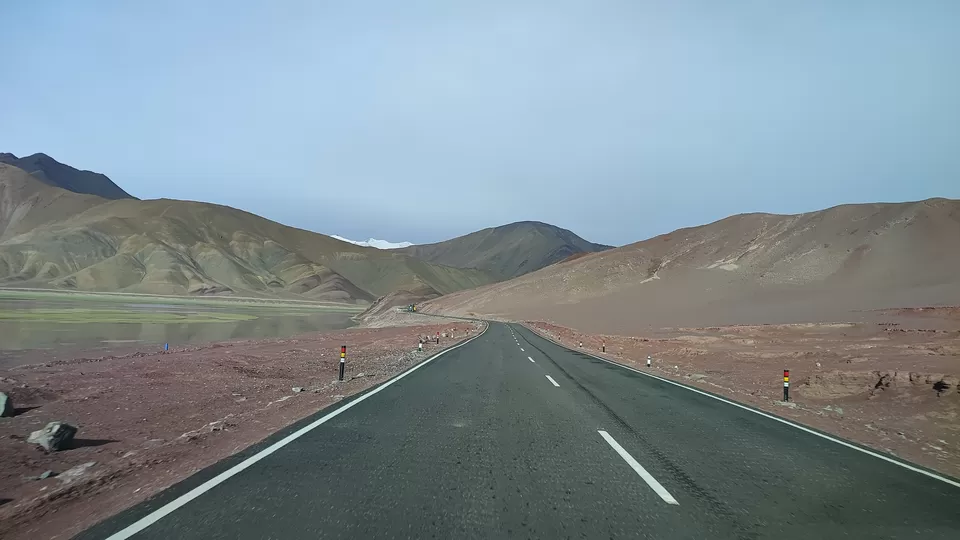
As the lights across the village were gradually shutting down (customary mountain schedule: early to bed, early to rise!), my eyes drifted to the night sky that presented a spectacle like none other. The temperature by now had plummeted and the cold winds were greeting the bones in my body, but I just stood there awe-struck at the magic that was happening several atmospheric levels above me. At one point, I think my mouth was left wide-open as I continued to observe the details across the vast sky. It felt like I was in a massive planetarium and being subjected to a private galactic show. We stood there for over an hour taking pictures and adjusting our phone camera settings to get near-perfect clicks. The settings were disclosed to us by a cab driver, who had captured this beautiful night sky on his phone a year ago.

After capturing over 20 odd photographs and witnessing this sight with the naked eye one final time, we headed back to our rooms and resigned for the night.
Chapter 15: Solitude and tranquility check at Tso Moriri & Kyagar Tso
Our final day of this fun-filled adventure trip had arrived. We had to head back to Leh, but not before undergoing a sanity check at the pristine, sacred, and hidden high-altitude lake, Tso Moriri. What we didn't realize is that we'll to see two Tso's for the price of 1. Haha! Double the solitude, double the tranquility!

A part of our road trip to these hidden lakes traversed the same route that we took on the earlier day. Given it was pre-noon and the sun was not in a pleasant mood to shine continuously, I got a different view of the neighboring rugged terrain and noted shades of red on the ground as well as on the peaks. There were patches of green as well on the hills but considering the altitude we had gained, chances of vegetation was low. The landscape thus presented another surprise and left me spellbound.

As our car took a left turn and wandered into the interiors of a beaten path, we crossed a small lake, which we were told we will stop by on our way back from Tso Moriri. We gained speed and continued ahead. After a few kilometers, I noticed a streak of blue at a distance as my heart skipped a beat. As we drew closer, the area opened up and the 16-mile lake greeted us with its turquoise water and a spectacular backdrop of partially snow-capped peaks. This lake is fed by springs and snow-melt from these mountains. Military barracks are located on the eastern shores of this lake and tourist entry is prohibited in those corners. The lake can be accessed through Karzok, which is also home to the 400-year-old Korzok Monastery.

Given we were early birds (and perhaps the only birds), our private affair was undisturbed for the next hour as we clicked pictures, patiently viewed the surroundings and breathed fresh air, and only heard faint sounds of birds. The clouds above were making swift movements but not at the cost of turning this romanticism into a rainy affair. On our way back, we stopped at Kyagar Tso, another small brackish lake surrounded by mountains. The turquoise shades reminded us of the virgin beaches that we've had the fortune of exploring along the Konkan coast of Maharashtra.
Well! It was finally time to hit the road again.

Chapter 16: Memories for a lifetime! And, hungry for more...

As the first chapter of the Leh-lands and Ladakhi ended, I vowed to return to this heavenly destination and satiate my travel bug. There's just so much to explore in this land and something for everyone looking for a getaway into the unexplored and unknown. And then, of course, there is one entire circuit in this part of this Ladakh(i) world that is left to experience, which we hope will refresh our souls and compel us to return for more cravings and adventures. Hopefully, our next journey to this wonderland wouldn't require years of planning or delays.

Until then, Jullay my friends, and take care!

